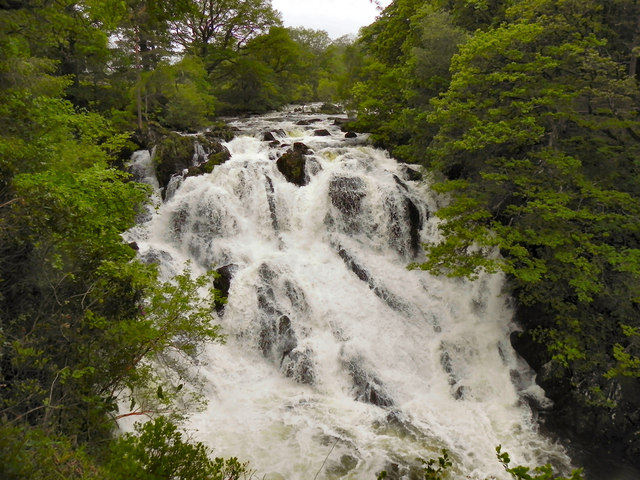Swallow Falls is the highest continuous waterfall in Wales and features a set of beautiful waterfalls on the River Llugwy located approximately one mile to the east of the village of Betws y Coed on route to Capel Curig and just off the A5. Swallow Falls is a breathtaking natural wonder that draws thousands of visitors each year.
Visitors can get access to view the falls via a viewing platform for which a small charge applies. The viewing platform is open throughout the year and costs £2 to access.
Off-road parking is available and refreshments are available across the road at the Swallow Falls Hotel. There is a large gift shop next to the hotel.
The best view of Swallow Falls comes from the north bank however which needs to be approached on foot and is a fair walk. If you’re up for the walk it’s well worth it however bear in mind that you’ll have to walk back afterwards!
Swallow Falls has been open to the public since 1913, when the second Lord Ancaster donated to the Betws y Coed parish council.
Swallow Falls has been a popular tourist attraction since the early 19th century when visitors first started visiting the area to admire its natural beauty. The waterfall was originally named Rhaeadr Ewynnol, which means “foaming waterfall” in Welsh, but it was later renamed Swallow Falls due to the swifts and swallows that can be seen swooping over the falls during the summer months.
In the early 20th century, a hydroelectric power station was built on the River Llugwy to generate electricity for the nearby village of Betws-y-Coed. The power station still exists today, but it no longer generates electricity and is now used as a museum to showcase the history of the site.
Swallow Falls is located on the River Llugwy, which flows through a steep-sided valley carved out by glaciers during the last Ice Age. The riverbed is made up of hard, volcanic rock known as rhyolite, which is resistant to erosion, creating a series of cascades and waterfalls.
The falls themselves are around 15 meters high, with the water plunging over a series of rocks and boulders before crashing into a deep pool at the bottom. The falls are particularly impressive after heavy rainfall, when the water flow increases, and the falls become even more powerful.
